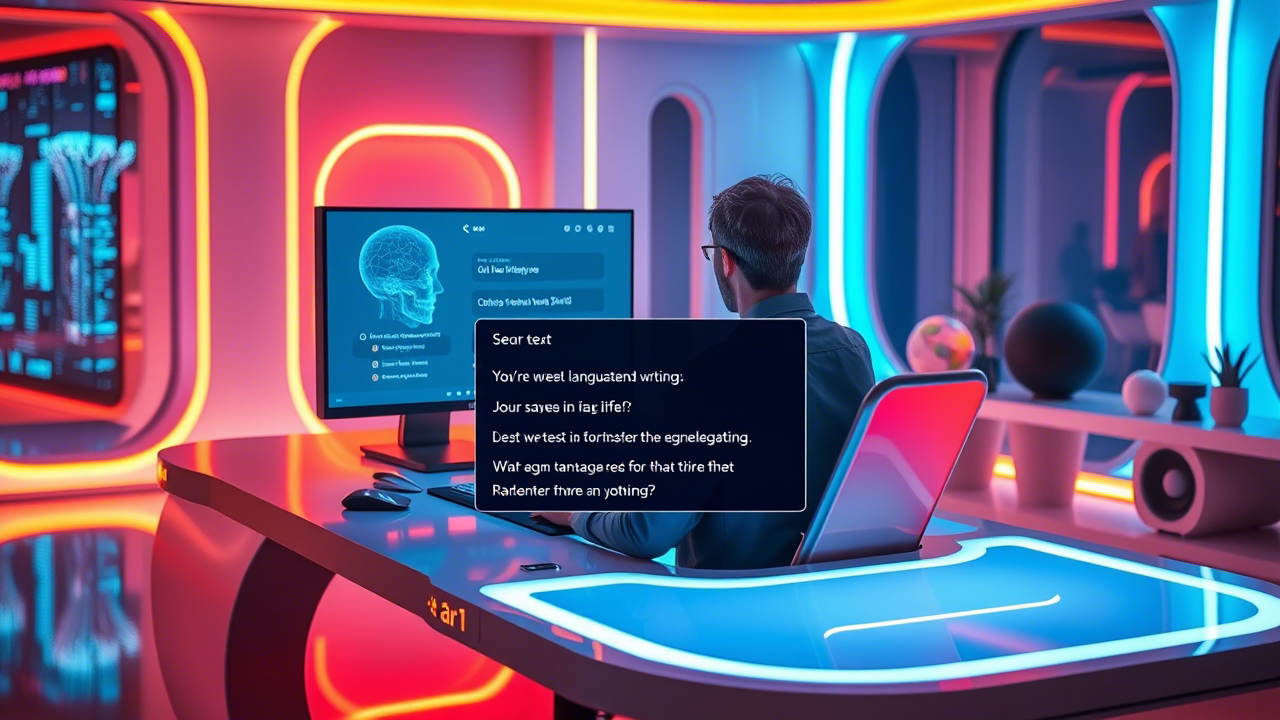Unlocking the Power of AI: A Masterclass in Prompt Engineering

In a world increasingly driven by artificial intelligence, the ability to communicate effectively with AI is no longer a niche skill but a fundamental component of success. As large language models (LLMs) become more integrated into our daily and professional lives, understanding how to interact with them to achieve optimal results is paramount. This is where prompt engineering comes in—the art and science of crafting the perfect instructions to guide AI toward generating truly remarkable outcomes. This article will serve as your comprehensive guide to mastering this essential skill, transforming your interactions with AI from simple queries to sophisticated dialogues that yield unexpected and amazing results.
What is Prompt Engineering and Why is it Important?

Prompt engineering is the process of designing and refining the inputs—known as prompts—given to an AI model to elicit a specific and desired output.[1][2] Think of it as providing a detailed roadmap for the AI, steering it towards the precise destination you have in mind.[3] It’s the bridge between human intent and machine execution.[1]
The importance of prompt engineering cannot be overstated. The quality of the output from an AI model is directly proportional to the quality of the prompt it receives.[4][5] A vague or poorly constructed prompt will likely lead to a generic or irrelevant response. Conversely, a well-crafted prompt can unlock the full potential of an AI, enabling it to perform a vast array of tasks with remarkable accuracy and creativity, from writing marketing copy and generating code to analyzing complex data and even composing music.[2] In essence, prompt engineering empowers you to move beyond being a passive user of AI to an active collaborator, shaping the AI’s output to meet your specific needs.
Learning the Craft: How to Become a Prompt Engineer

While the title “prompt engineer” might sound technical, the barrier to entry is lower than you might think. It is a field that is both dynamic and evolving, requiring a blend of linguistic skills and creative expression.[6] Here are some key areas to focus on to develop your prompt engineering expertise:
- Understand the Fundamentals of AI and LLMs: A basic understanding of how large language models work will provide you with valuable context for crafting effective prompts.
- Master the Art of Clear Communication: At its core, prompt engineering is about clear and concise communication. The ability to articulate your request with precision is crucial.[7]
- Embrace Iteration and Experimentation: Don’t expect to get the perfect result on the first try. Prompt engineering is an iterative process of refining your prompts based on the AI’s responses.[6][8]
- Study Advanced Prompting Techniques: Familiarize yourself with techniques like “zero-shot prompting,” “few-shot prompting,” and “chain-of-thought” prompting to tackle more complex tasks.[1]
The Language of Prompts: Does it Matter?
A common question is whether the language used in a prompt—be it English, French, or Arabic—affects the quality of the results. While many large language models are trained on vast datasets that are predominantly in English, they are increasingly capable of understanding and generating text in numerous languages.
However, the grammatical structure and nuances of a language can influence the AI’s response.[9] Studies have shown that linguistic features such as syntax and lexico-semantic choices can significantly impact task performance.[10] Therefore, while you can interact with AI in various languages, using clear, grammatically correct, and well-structured sentences is always recommended to ensure the best possible outcome.
The Anatomy of a Professional Prompt: A Step-by-Step Guide

Crafting a professional prompt is a structured process. By breaking it down into distinct stages, you can ensure all necessary components are included to guide the AI effectively.
Stage 1: Define the Role and Persona
Begin by assigning a specific role or persona to the AI. This immediately sets the context and tells the AI from what perspective it should respond.[11][12] For instance, instead of just asking for marketing copy, you could say, “You are an expert copywriter specializing in luxury travel.”[8]
Stage 2: Provide Clear and Concise Instructions
Clearly state the task you want the AI to perform. Use action verbs and be as specific as possible.[7][12] Avoid ambiguity. For example, instead of “Write about social media,” a better instruction would be, “Write a 500-word blog post on the benefits of using Instagram for small businesses.”[13]
Stage 3: Offer Context and Constraints
Provide the AI with the necessary background information and any constraints it needs to adhere to.[4] This could include the target audience, the desired tone of voice, key information to include, and things to avoid.[8][13] The more relevant context you provide, the more tailored the output will be.
Stage 4: Specify the Desired Format
Clearly outline the format you want the response in. This could be a bulleted list, a table, a formal report, or a casual email.[11] Providing a clear structure helps the AI organize its output in a way that is most useful to you.[8]
Stage 5: Include Examples (Few-Shot Prompting)
For more complex or nuanced tasks, providing examples of the desired output can be incredibly effective.[14] This technique, known as “few-shot prompting,” helps the AI to better understand your expectations and replicate the desired style and structure.[15]
Stage 6: Refine and Iterate
Once you receive the initial output, review it and identify areas for improvement. You can then refine your prompt based on this feedback and ask the AI to regenerate the response. This iterative process is key to achieving exceptional results.[16]
A Practical Example of a Professional Prompt
Let’s put these stages into practice with a detailed example. Imagine you need a blog post for a financial advisory firm.
Initial Vague Prompt: “Write a blog post about saving for retirement.”

Professional, Detailed Prompt:
“You are a certified financial planner and an expert content creator for a reputable financial advisory firm.
Your task is to write an engaging and informative 800-word blog post aimed at young professionals (ages 25-35) who are just starting to think about retirement savings.
The blog post should cover the following key points:
- The importance of starting to save early.
- An explanation of different retirement savings accounts (e.g., 401(k), Roth IRA).
- Simple, actionable tips for getting started with a small amount of money.
- The concept of compound interest explained in simple terms.
Please adhere to the following constraints:
- The tone should be encouraging, professional, and easy to understand. Avoid technical jargon.
- The blog post must have a compelling title.
- Structure the post with a clear introduction, body paragraphs with subheadings for each key point, and a concluding summary.
- Include a call-to-action at the end, encouraging readers to schedule a free consultation.
Here is an example of the style we are looking for:
‘Retirement might feel like a distant dream, but the small steps you take today can lead to a financially secure future. Think of it as planting a tree – the sooner you start, the more time it has to grow.’
Please provide the output in a well-formatted blog post structure.”

This detailed prompt provides the AI with a clear role, specific instructions, necessary context, and a desired format, significantly increasing the likelihood of receiving a high-quality and relevant response.
Conclusion: Your Dialogue with the Future
Prompt engineering is more than just a technical skill; it’s a new form of communication that allows us to tap into the vast potential of artificial intelligence. By mastering the art of crafting effective prompts, you can transform AI from a simple tool into a powerful creative partner. By following the principles of clarity, context, and iteration, you can guide AI to produce results that are not only accurate and relevant but also truly exceptional and innovative. The future of our interaction with AI is a dialogue, and the quality of that conversation is in your hands.
Sources help




